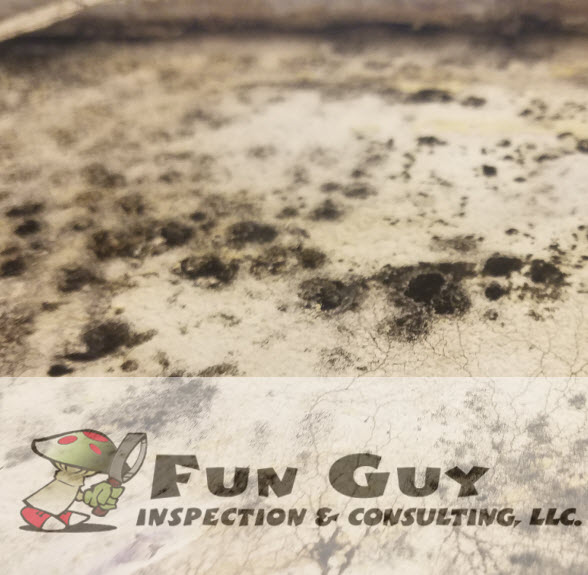Seattle Children’s hospital revealed Tuesday that one patient has died and five others have been infected by a potentially dangerous mold that has forced the medical center to indefinitely close all of its main operating rooms.
The revelation shows the problem at the prestigious hospital was more extensive than officials there had previously acknowledged publicly.
The hospital disclosed the infections and death to The Seattle Times in response to follow-up questions regarding the closures of four operating rooms on its main Seattle campus May 18 because of Aspergillus mold and of the remaining 10 operating rooms May 24.
The hospital says operating rooms have been infested by mold — off and on — for about a year likely because of deficiencies in the operating rooms’ air handling and purification systems.
Three patients were infected last year and three this year, Children’s public-relations manager Alyse Bernal wrote in an email. The patient who died developed the infection in 2018.
“The six patients who developed Aspergillus infections were at higher risk of infection due to the types of procedures they had,” Bernal said. “We are deeply saddened that one of these patients died.”

The Centers for Medicare & Medicaid Services (CMS) sent a letter to Children’s administration on June 20 saying the hospital is out of compliance. The report sent with the letter highlights a number of problems, which included issues with the “air handlers serving the operating rooms.” The letter states that CMS will terminate Children’s Medicare provider agreement on Sept. 19.
About 1,000 surgeries have been postponed. Other surgeries have been moved to the cardiac catheterization facility on the hospital’s main campus in Seattle and its Bellevue campus. Most surgeries have been moved to Harborview Medical Center, University of Washington Medical Center, Swedish Medical Center and Mary Bridge Children’s Hospital in Tacoma.
Harborview has taken on 70 surgeries and UW Medical Center has taken on 15, said Susan Gregg, spokesperson for both hospitals. Absorbing the extra surgeries has taken some thoughtful planning and coordination, she said.
Mary Bridge didn’t say how many surgeries are being performed in its facilities. Swedish said it is still working to determine how many surgeries it can take on.
Aspergillus is a common mold found outdoors and indoors, and people breathe it daily without getting sick, according to the CDC. But people with lung disease or weakened immune systems, and especially organ or stem-cell-transplant patients, are at higher risk of developing aspergillosis, a disease caused by the mold. Aspergillosis can range from mild to serious, manifesting as an allergic reaction or infections in the lungs and other organs.
Hospital patients are typically infected when dust is stirred up during renovation or construction at a hospital, or through contaminated biomedical devices.
he six infections at Children’s are believed to be caused by problems in the facility’s air handling and purification systems, which serve the main operating rooms. An investigation conducted in May by Children’s found gaps in the air-filtration system believed to be the key contributing factors to the air-quality issue, Bernal wrote in an email. “Outside industrial hygienists” are helping the hospital investigate the source of the mold, she wrote.
Last June, after air testing at Children’s detected the mold in two operating rooms and an equipment-storage room, those rooms were closed for three days and all operating rooms and storage rooms were inspected, Bernal wrote. “At that time, the issue appeared to be confined to the affected rooms and we took appropriate corrective actions,” she wrote.
Children’s reached out at the time to Public Health — Seattle & King County, which, in turn, connected the hospital to the Centers for Disease Control and Prevention (CDC) because the federal agency had more expertise dealing with that kind of mold, public health spokesperson James Apa said. The CDC issued no report after it determined Children’s was taking appropriate actions to investigate and address the problem, Apa said. Washington state Department of Health (DOH) investigators also checked out the hospital and offered suggestions on how to improve air quality, which the hospital followed, Bernal wrote.
But the mold returned in 2019. In mid-May, it was detected in four operating rooms and some equipment-storage rooms during a routine check, Bernal said.
After the hospital closed the four operating rooms May 18, some “urgent and less invasive procedures” were performed in the remaining 10 operating rooms, Bernal wrote in an email to The Times on Tuesday.
Six days later, those operating rooms were also closed. Bernal said the additional closures were needed so crews could access and fix the hospital’s air system. She would not say whether mold was detected in those rooms.
“We will reopen our operating rooms when it is safe to do so,” Bernal wrote in an email. Children’s has not yet determined when that will be.
Bernal told The Times in May that Children’s was contacting 3,000 patients who had surgery in the four months leading up to the May 18 closure and advising them to watch for infection symptoms. Symptoms for invasive aspergillosis include a fever, chest pain, coughing up blood and shortness of breath.
Since May, Children’s has switched to an updated and sanitized air handler, installed a new humidification system, sealed potential sources of air leaks in operating rooms, cleaned all the affected spaces several times and implemented new cleaning processes, Children’s spokesperson Kathryn Mueller wrote in an email to The Times on Sunday.
https://www.seattletimes.com/seattle-news/health/1-patient-dies-5-others-infected-by-mold-that-closed-seattle-childrens-hospital-operating-rooms/
